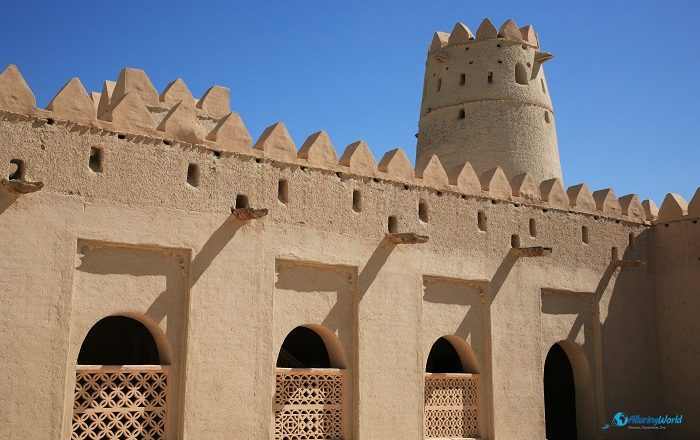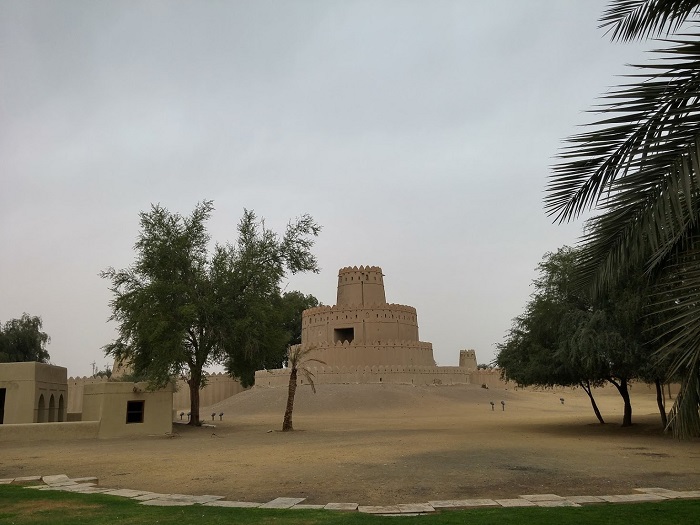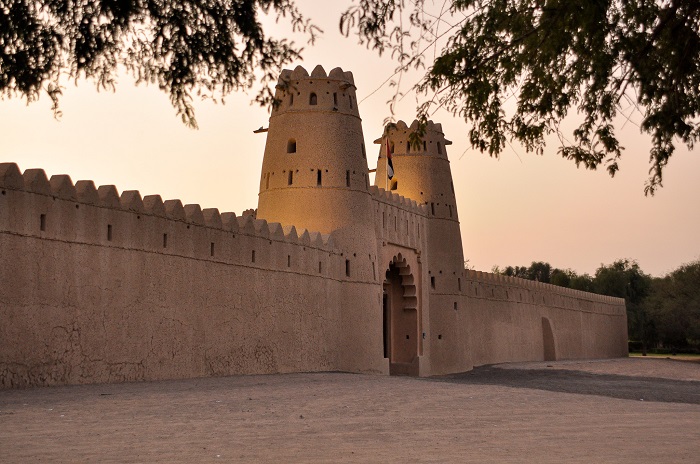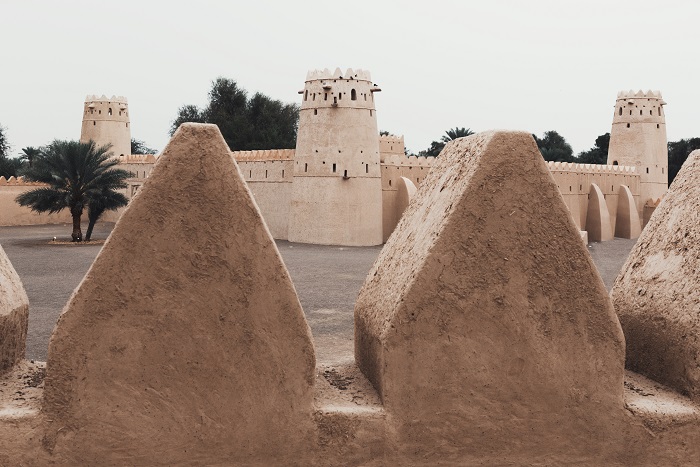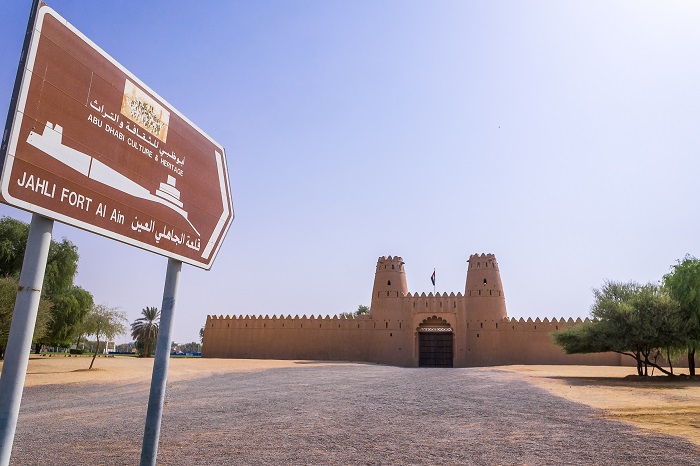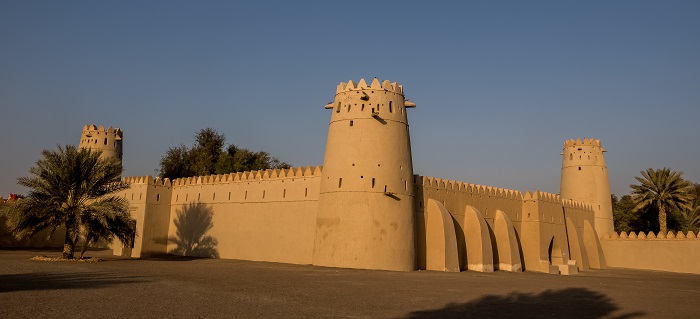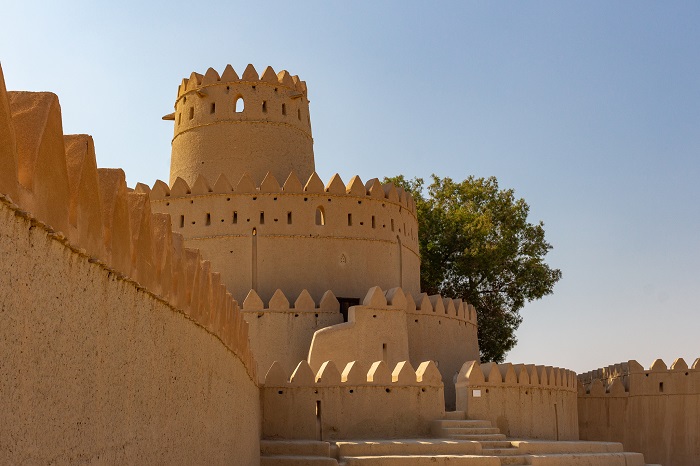Al Jahili Fort is an outstanding historical landmark that is proudly standing in the city of Al Ain within the region of Al Ain that belongs to the eastern region of the Emirate of Abu Dhabi within the western part of the United Arab Emirates. This fort is one of the most significant and best-preserved forts in the country, an example of the rich cultural heritage and architectural skills of the region.
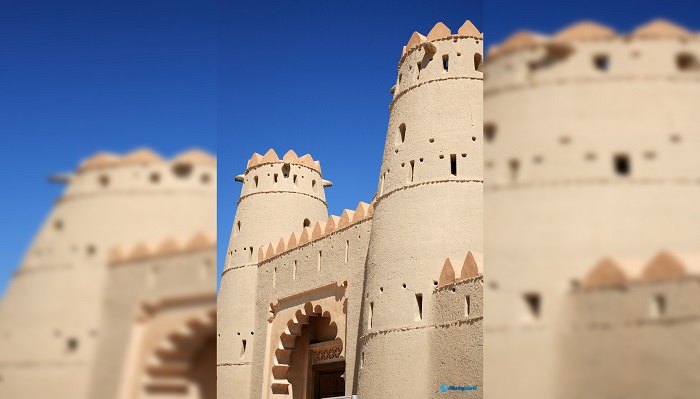
Still, it is not just a symbol of the past because it testifies to the resilience and foresight of those who built it; therefore, it is an integral part of the UAE’s history and a must-visit destination for those interested in the cultural and historical legacy of the nation.
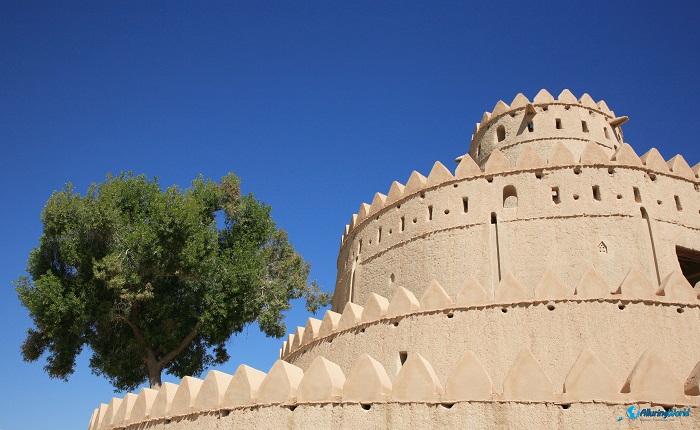
In the late 19th century, around 1891, Al Jahili Fort was commissioned by Sheikh Zayed bin Khalifa Al Nahyan, also known as Zayed the Great, who ruled Abu Dhabi from 1855 to 1909. The fort was built as a symbol of power and to defend the city of Al Ain and its precious palm groves, in addition to serving also as a crucial military base that housed the forces responsible for protecting the region from external threats and maintaining internal peace among the local tribes. The strategic importance of Al Ain, situated near the borders of what is now Oman and close to vital inland oases, made Al Jahili Fort a key military and administrative center during its time.
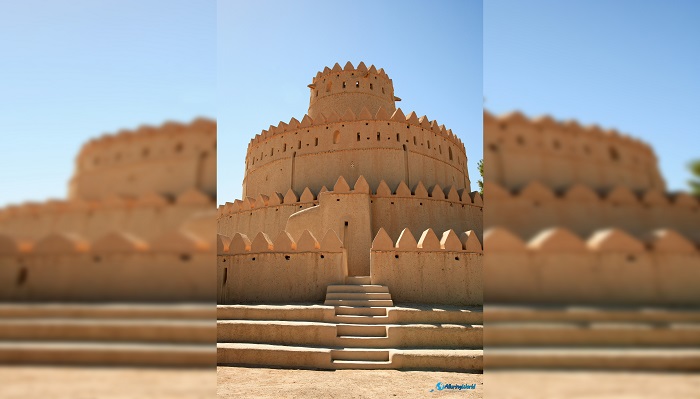
The construction of Al Jahili Fort reflects traditional Emirati architecture, characterized by the use of locally sourced materials and techniques suited to the harsh desert environment. The fort was constructed with mud bricks, which were a widely used material in the area because of their availability and thermal conductivity, the mud bricks were produced by combining clay, sand, water, and straw, then molded into bricks and dried in the sun.
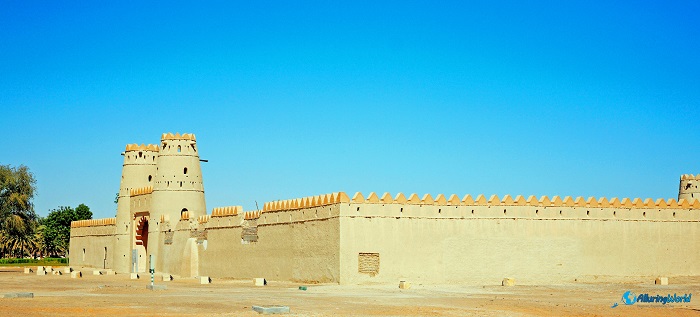
The thick walls of the fort, which were coated with layers of mud plaster, provided excellent insulation against the intense heat of the desert, keeping the interior cool during the scorching summer months. It is quite important to mention that the fort’s design includes circular watchtowers, square structures, and a large courtyard, which were typical features of military architecture in the region.
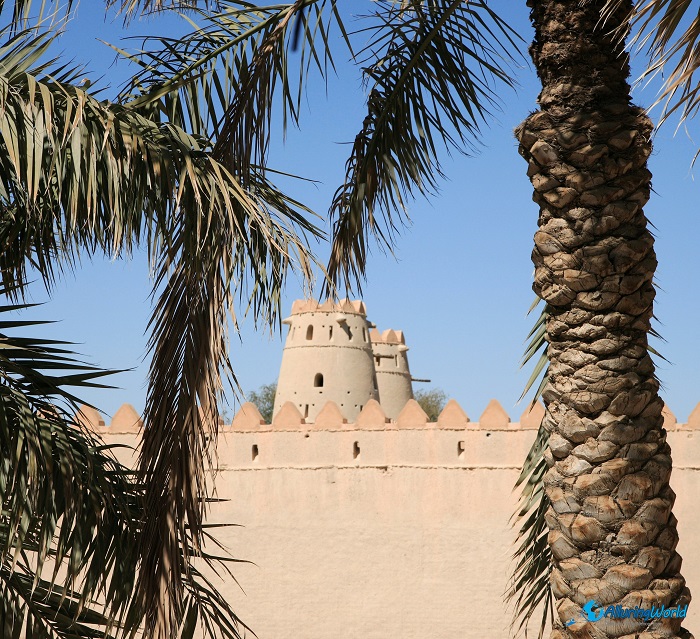
Additionally, Al Jahili Fort’s design is functional and visually appealing as it incorporates the functional requirements of a defensive fortress and also mirrors the architectural flair of the era. The original structure of the fort was that of a grand square compound surrounded by high walls with a watch tower at each corner, but this was augmented and altered with the passage of time to serve a better defensive purpose. The primary entrance to the fort was strategically positioned to be easily defensible, while the interior spaces were designed to accommodate soldiers, storage, and essential supplies.
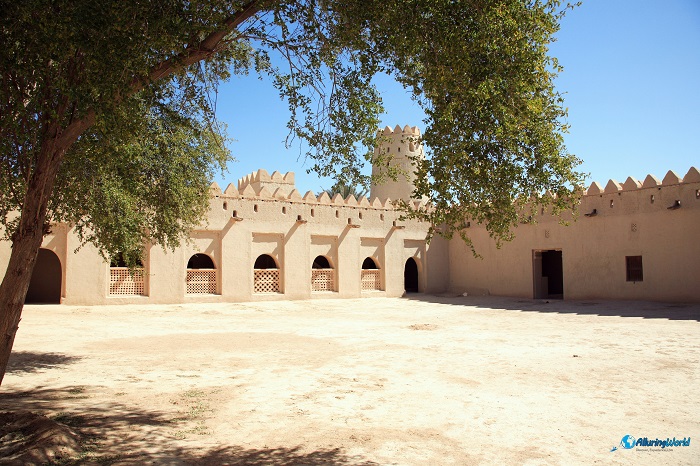
In addition to its military functions, Al Jahili Fort also served as a residence for the ruling family during certain periods and this dual purpose of the fort highlights its importance as both a defensive stronghold and a symbol of authority and governance in the region. The presence of a falaj, or irrigation system, within the fort’s grounds further underscores its role in managing the agricultural resources that were vital to the sustenance of the local population.
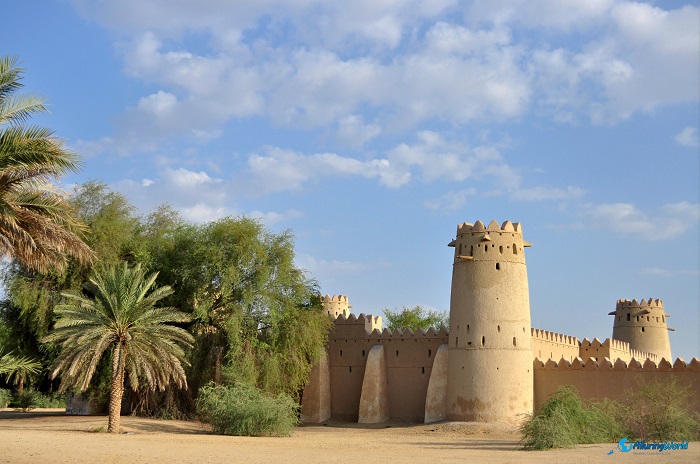
Today, Al Jahili Fort holds immense historical and cultural significance since it has been meticulously restored and transformed into a cultural site that offers visitors a glimpse into the UAE’s past. The restoration process, which commenced in the early 1980s and concluded in 2008, was performed with utmost care to ensure the original structure and material remained intact as far as possible.
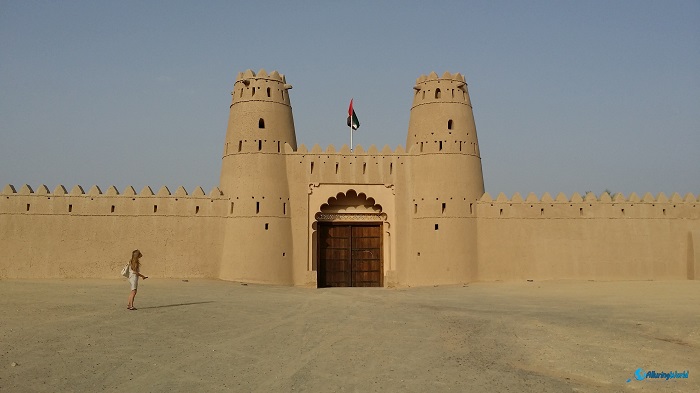
The restoration efforts focused on repairing the mud-brick walls, reinforcing the foundations, and restoring the towers and internal structures to their former glory, and the project also included the addition of modern facilities to accommodate exhibitions, events, and educational programs, making the fort a dynamic center for cultural exchange and learning.
Al Jahili Fort is now a prominent cultural landmark and a popular tourist destination in Al Ain. It contains a permanent display on the life and times of British explorer and adventurer Wilfred Thesiger, who traversed the Rub’ al Khali (the Empty Quarter) desert in the 1940s, and an exhibition of his photographs and personal effects, revealing something of the life and times of the time and place. The fort further hosts various cultural events, including traditional music performances, art exhibitions, and heritage festivals, which attract both locals and tourists.
To visit this historic site, visitors will need to get to Al Ain, which is approximately 90 minutes by car from Abu Dhabi and around two hours from Dubai, and once in Al Ain, the fort is easily accessible by local taxi services or public buses, as it is situated close to the city center. The fort is open to the public from Tuesday to Sunday, with varying hours during Ramadan, so it’s advisable to check the current schedule before planning your visit. Entry to the fort is free, making it an affordable and enriching experience for tourists and locals alike.
Visitors to Al Jahili Fort can explore its impressive architecture, walk through the courtyard, climb the watchtowers for panoramic views of the surrounding area, and learn about the history of the fort and the region through the exhibits on display, there are guided tours that are available in multiple languages, offering in-depth insights into the significance of the fort and its role in the region’s heritage. The fort’s location in Al Ain, known as the “Garden City” of the UAE, makes it easily accessible and a perfect addition to any itinerary exploring the rich history and culture of the area, and since Al Ain itself is a UNESCO World Heritage site, it is recognized for its archaeological sites, oases, and historical landmarks, of which Al Jahili Fort is a key component.
The historical significance of Al Jahili Fort exceeds historical importance alone; it symbolizes the Emirate’s spirited and enthusiastic reverberation for preserving its heritage and its commitment to celebrating its glory. The fort reminds people of how this region has been historically strategic and culturally significant, and the future of turning into a cultural center will make sure that coming generations can hook up with the past. The careful restoration and ongoing maintenance of the fort reflect the UAE’s dedication to preserving its cultural landmarks, making Al Jahili Fort a vital part of the country’s identity.
In conclusion, Al Jahili Fort is not only an architectural masterpiece but also a symbol of the rich cultural heritage and history of the UAE. Its original construction through the use of traditional techniques and materials, its former strategic location, and its present status as a cultural and historical landmark ensure that it is a place that everyone interested in the history and culture of the area must see, and the restoration and conservation efforts of the fort serve to illustrate the importance of preserving such sites so that Al Jahili Fort can continue to be a vital cultural and educational resource for generations to come.

